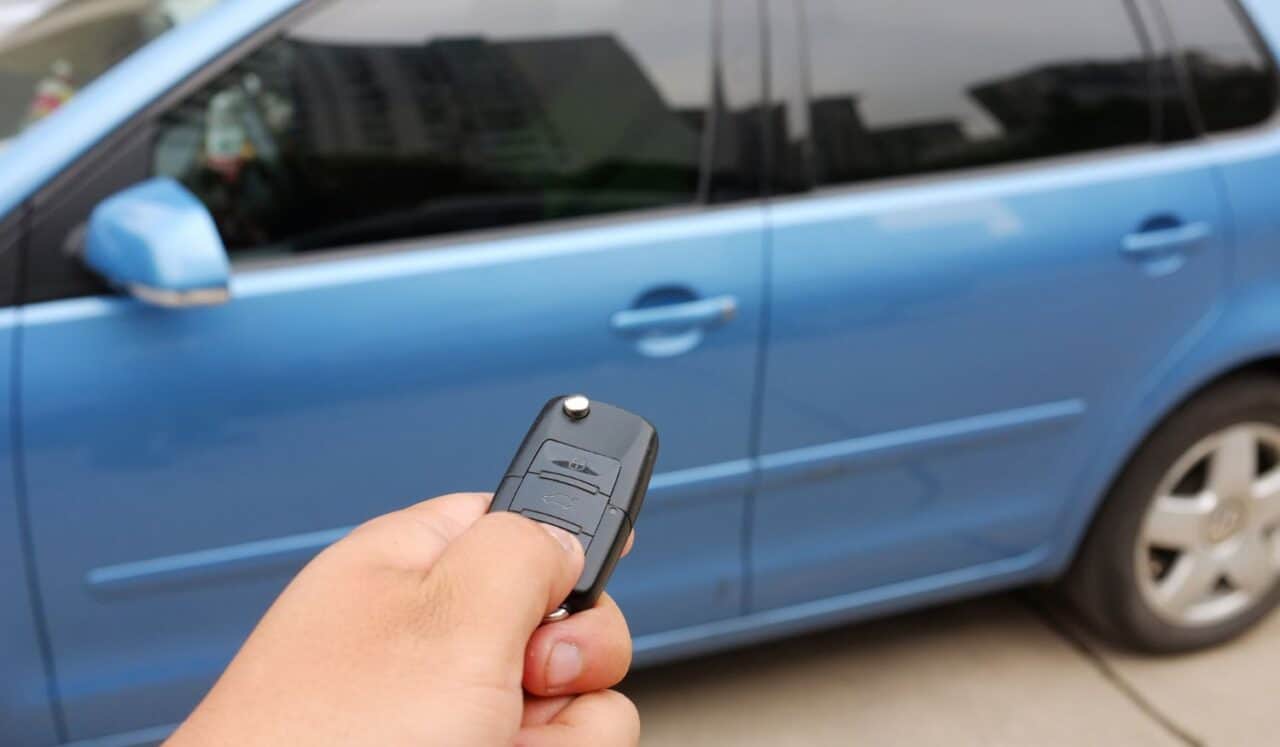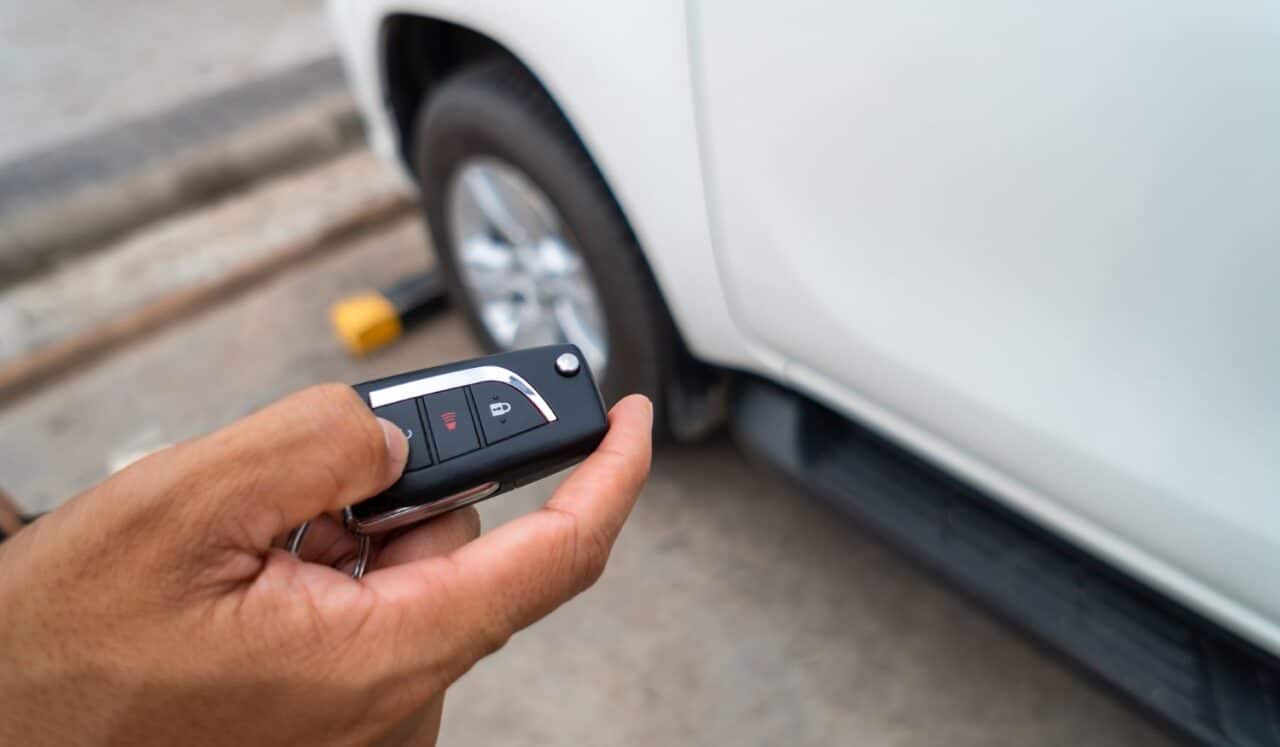Remote Start And Check Engine Light: Can There Be A Connection?
There could be a connection between a remote start system and a check engine light. Installing a remote start system can sometimes interfere with the vehicle’s onboard computer and cause the check engine light to turn on. But why does this happen?
You can run into remote start system problems when the key’s battery dies or from a unique glitch. In such cases, the check engine light may wrongly indicate issues with the vehicle’s emissions control system or other related components. Your best bet is to seek the help of a professional mechanic.
It’s always best to have your vehicle inspected by a professional mechanic to diagnose the cause of the check engine light and make necessary repairs. Let’s look at the relationship between the remote start and the check engine light.
What Causes a Remote Start to Stop Working?

Several factors can cause a remote start system to stop working. For example, if the battery in the remote start key gets depleted, the remote start will not function.
The remote start system uses a wireless signal to communicate with the vehicle. Therefore, the system may not function properly if the signal is weak or damaged.
Furthermore, if the wiring for the remote start system is damaged, the system may not work.
The control module is the brain of the remote start system; if it is not functioning properly, the system may malfunction.
Other electronic devices can interfere with the wireless signal used by the remote start system, causing it to stop working.
If there is a software update for the vehicle, it may affect the operation of the remote start system.
Will Remote Start Work If The Check Engine Light Is On?
A check engine light may indicate a problem with the vehicle’s emissions control system or another component. That could prevent the remote start system from functioning.
If the check engine light is on, it may indicate that the vehicle is not running properly. Starting the engine with the remote start system could cause further damage.
In some cases, the check engine light will cause the remote start system to shut down to prevent the engine from starting.
Can Remote Start Cause the Check Engine Light to Turn On?
Yes, a remote start system can cause the check engine light to turn on.
In addition, installing a remote start system can sometimes interfere with the vehicle’s onboard computer and cause a check engine light to turn on or activate other alert functions.
In some cases, the remote start system may cause the vehicle to run in a manner that triggers the check engine light.
A professional mechanic must inspect the vehicle to see if the check engine light turns on after installing a remote start system to diagnose and fix any potential issues.
How to Make Remote Start Work With the Check Engine Light On
You’ll have to diagnose and resolve the underlying issue to make a remote start system work with the check engine light on. Here’s how:
- Read the codes: The first step is to find out what codes the vehicle’s onboard computer is storing. An OBD-II scanner (on Amazon) can retrieve the codes and diagnose the issue.
- Narrow down the problem: Once you have the codes, you can determine the root cause of the check engine light. It could be a faulty sensor, a loose or damaged wiring harness, or another issue.
- Have the vehicle inspected: If you are not familiar with vehicle repair, it’s best to have the vehicle inspected by a professional mechanic.
- Confirm that the check engine light is off: Once the problem is fixed, turn the key to the “on” position (without starting the engine) to confirm that the check engine light has been turned off.
Once the check engine light is off, and the underlying issue is resolved, the remote start system should function properly.
Can Remote Start Damage Your Car If The Check Engine Light Is On?
A remote start system can damage the vehicle if the check engine light is on. In addition, if the check engine light is on, it may indicate a problem with the vehicle’s emissions control system.
Starting the engine with the remote start system could cause further damage to the vehicle, especially if the problem is related to the engine or emissions control system.
In some cases, the check engine light will cause the remote start system to shut down to prevent the engine from starting.
What Are The Most Common Problems With Remote Start Devices?

There’s plenty of possible reasons why your remote start device can go haywire.
Here’s a few that you can eliminate through trial and error:
- Dead battery: If the battery in the remote start key is flat, the remote start will not function.
- Software update: If there’s a software update for the vehicle, it may affect the operation of the remote start system.
- Range issues: If the distance between the remote start key and the vehicle is too great, the system may not function properly.
If none of the above don’t seem to be the issue, your remote start could be affected by one of the following:
- Weak signal: The remote start system uses a wireless signal to communicate with the vehicle. The system may not function properly if the signal is weak or damaged.
- Wiring problems: If the wiring for the remote start system is damaged, the system may not work.
- Malfunctioning control module: if it is not functioning properly, the system may not work.
- Interference from other devices: Other electronic devices can interfere with the wireless signal used by the remote start system, causing it to stop working.
- Security system issues: If the remote start system is not properly integrated with the vehicle’s security system, it may not work or may trigger an alarm.
Remember that the remote start device function uses technology that depends on hardware and software to function properly. In the end, it’s probably best to consult a professional.
Integrating a remote start system requires a thorough understanding of how your car’s onboard computer operates. An installation done incorrectly and without fine-tuning may present a serious safety risk.
Make certain that the initial installation is performed by a qualified professional. The primary reason, aside from safety, is that different cars’ require differing setups and fine-tuning.
If you are unsure, it’s best not to try any DIY fixes because you may damage other systems and functions of the onboard computer.
